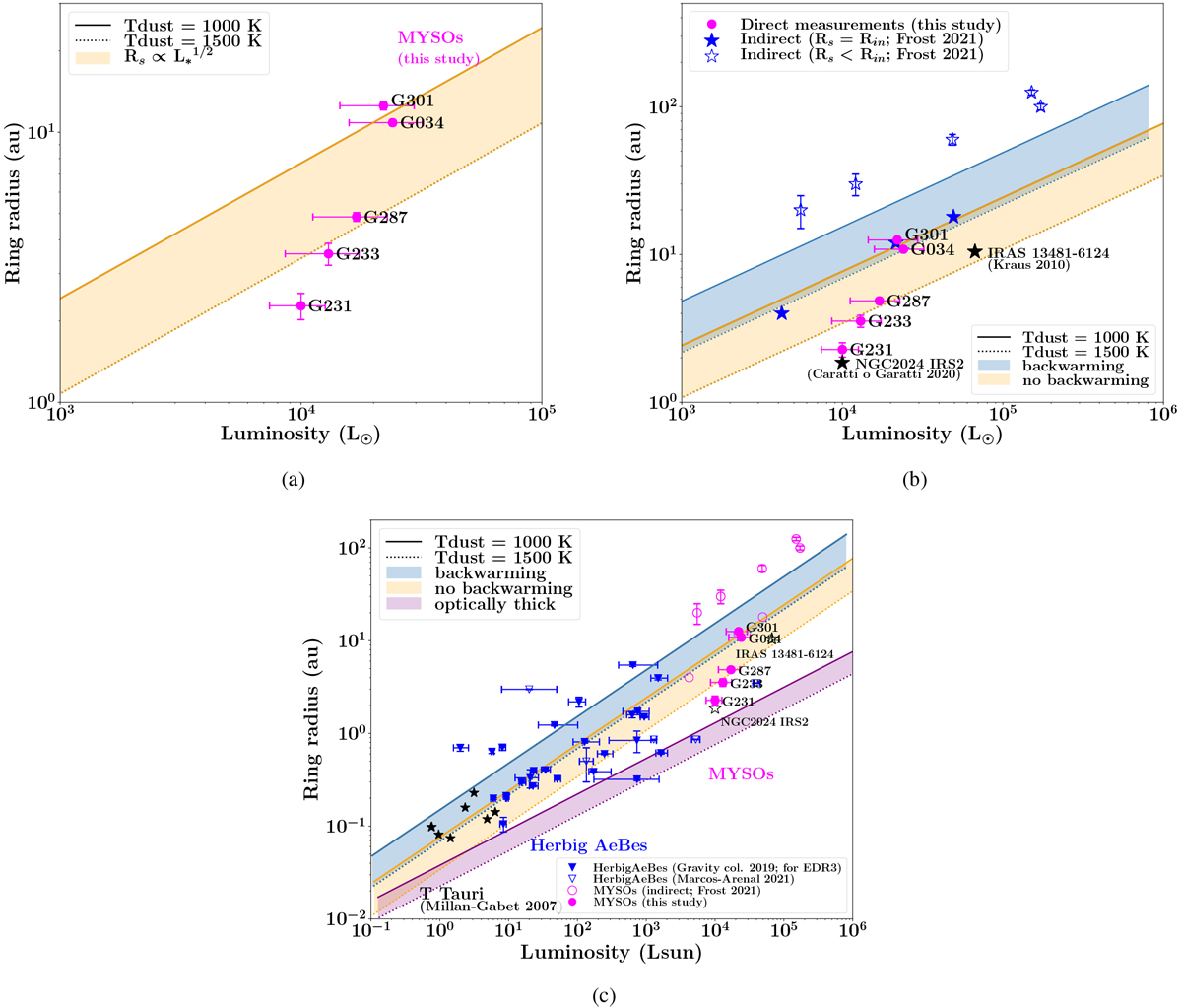Fig. 5

Download original image
(a) Near-IR size–luminosity diagram of our observed sample of MYSOs. The measured inner ring size Rin of the observed MYSOs (GRAVITY, AMBER; based on Table 3) is plotted with respect to the stellar luminosity. The shaded area represents the dust sublimation radius Rs as predicted by the presence of a disc with an optically thin cavity for a range of temperatures. The adopted dust sublimation temperatures are 1000 K (solid line) and 1500 K (dotted line). (b) Same as before but overplotted with two MYSOs with K-band measurements from the literature (filled black stars; IRAS 13481-6124, NGC 2024 IRS2, Kraus et al. 2010; GRAVITY Collaboration 2020a) and with indirect measurements (star symbols; modelled sizes presented in Frost et al. 2021). The open and filled stars represent the sources for which the modelled inner radius was found to be larger than or equal to Rs respectively. The dust sublimation radius as predicted by models of different dust temperatures with (blue area) and without (yellow area) backwarming effects is also overplotted. (c) Same as before but including the available measurements of Herbig AeBes and T Tauris from the literature. The dust sublimation radius as predicted by the classical scenario of a flat optically thick disc is also overplotted.
Current usage metrics show cumulative count of Article Views (full-text article views including HTML views, PDF and ePub downloads, according to the available data) and Abstracts Views on Vision4Press platform.
Data correspond to usage on the plateform after 2015. The current usage metrics is available 48-96 hours after online publication and is updated daily on week days.
Initial download of the metrics may take a while.


